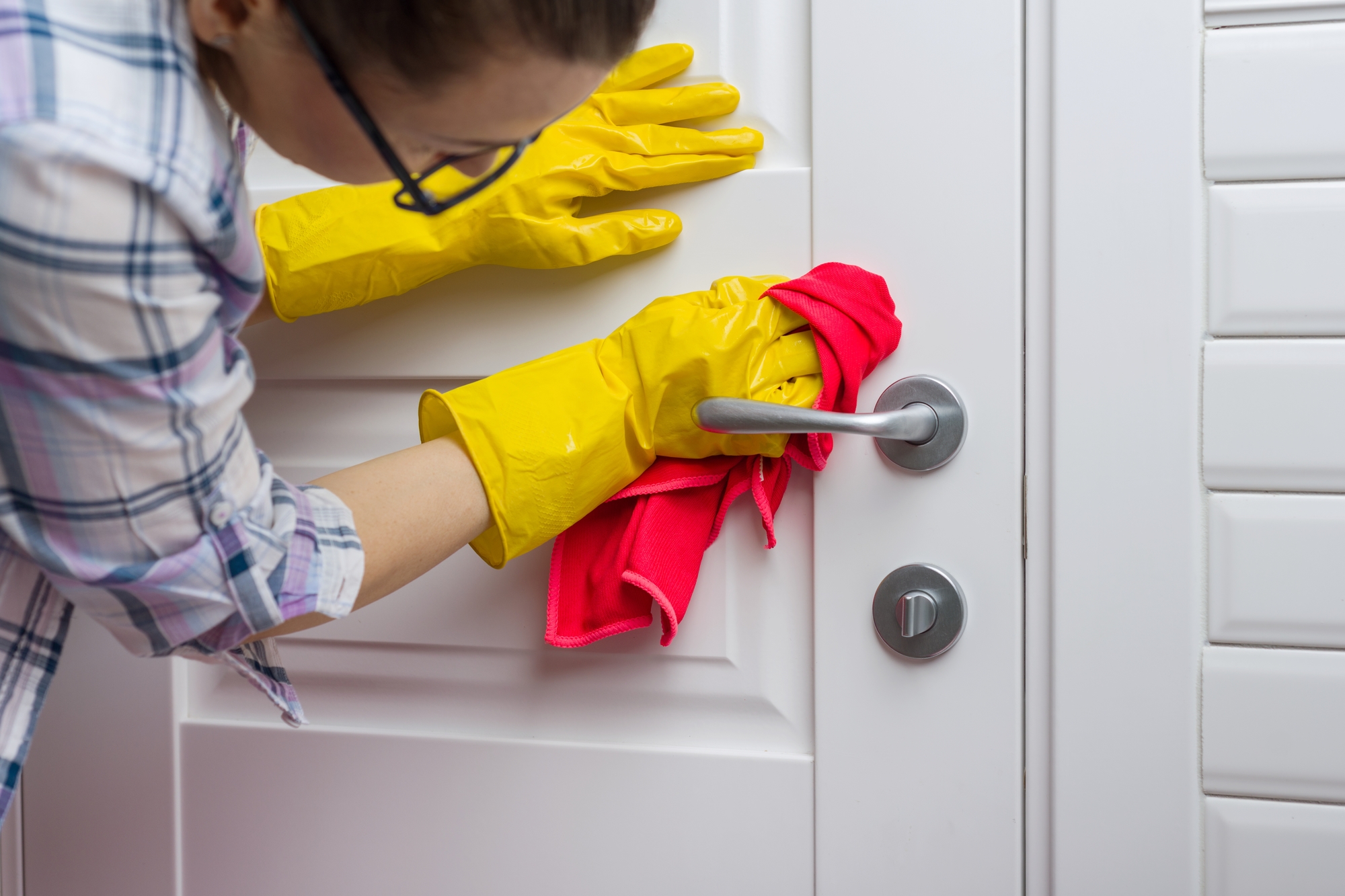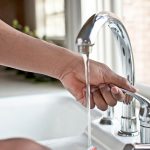
What are the safest locks for your door 2020 and how to keep safe from Coronavirus
In recent years, home security has been an issue of constant concern to us. Nowadays, coronavirus is also a matter that threats our life. Robbers are constantly finding new ways to break through the doors of homes and have now found ways to handle security doors – πόρτες ασφαλείας.
In particular, if your security door is installed before 2010, you should add it to your list as you are not secure enough. Lately, there has been an increase in violations in such locks, with no substantial breach at the door.
Preventing the security systems in your home will save you from future burglars. If you are looking for the best door lock for your home, next-generation security locks are a pretty good choice. There are several choices of brands and prices in the market and you can choose the one that suits you best and covers your security needs.
Read the information below to decide what kind of lock to put on your door.
The safest home locks and everything you need to know about the ANSI rating system!
What are the safest door locks for your home 2020?
Plus, large-key locks, special-type locks, and security locks that were fitted before 2010 offer no security.
Burglars have identified ways to open these locks within 2-5 minutes and completely quiet. So, if you want to replace your home lock, you might prefer to use the next generation security locks. The choices you have are:
1. Plastic cylinder safety locks 2020
Roller locks are among the next generation of safety locks. Their function is based on the existence of a robotic safe. The robotic belly button is mechanically operated with balloons and timers, and no springs are manufactured. To open the door, the key commands the timers to rotate. This way, the unlock can be done with a single key, and no keys can be created.
The security keys for these doors are always sealed to the owner. If you need more than one key for your door, you can create a key only by presenting the property card you receive when you purchase the lock.
2. Safety locks with steel cylinder 2020
The safest locks use a steel cylinder. A steel cylinder, because of its material, is more difficult to break. ‘So there’s more protection and more security for your home.
Steel cylinder safety locks may be more expensive but they are much safer. They feature a steel defender system that prevents the rollers from breaking, or drilling holes in the interior. In addition, they have a dual security system that blocks the bolts and belly button in case of a system breach. This way you get more security, as the door does not open in the event of a violation of its mechanism.
In any case, you should remember that locking alone cannot provide you with the security of your home. You need to use a complete protection system combined with the safest lock – κλειδαριές ασφαλείας – in order to get the maximum results.
Security door system 2020: Take action!
What do you know about the ANSI scoring system?
The safest locks are rated according to the ANSI system. The score is divided into scales indicating whether or not the impact lock is resistant. Thus, the locks are divided into:
Grade 1 locks: The safest locks 2020
Grade 1 locks are rated as the safest locks on the market. A Grade 1 lock has the highest impact resistance and can pose a significant obstacle to the entry of robbers.
Grade 2 locks
Grade 2 locks may not be the safest locks you can choose, but they can provide a good protection to your home. In this category are mainly the most commercial locks.
Grade 3 locks
Grade 3 locks can meet your needs. However, they are prone to robber activity and cannot provide you with the security you are looking for in your home.
We hope you found the article useful and found what are the safest door locks for your home. If you would like more specialized advice on changing your lock, you can contact the rated locksmiths.
Clean your safety door and keep safe from coronavirus
It is prudent to regularly clean the surfaces we touch most often. These are tables, knobs, switches, safety door handles, cabinets, toilets, taps, sinks and more. This should be done with household cleaners and disinfectants that are suitable for any surface.
Labels on cleaners provide instructions for the safe and effective use of each product, including the precautions you should take when using it (gloves, ventilation, etc.) where necessary.
Coronavirus: How to disinfect at home
Household members should be aware of the symptoms that the coronavirus manifests and prevent its spread to the home.
Clean and disinfect hand-held surfaces in common areas of the home (e.g tables, chairs, doors, switches, locks, remote controls, cabinets, toilets, sinks).
Coronavirus: How to clean and disinfect surfaces
- Wear disposable gloves when cleaning and disinfecting surfaces. The gloves must be discarded after each cleaning. If you are using multi-purpose gloves, they should only be used for cleaning and disinfecting surfaces in order to disinfect the coronavirus and not for other purposes. Consult the manufacturer’s instructions for the cleaning and disinfecting products you use. Clean hands immediately after removing gloves.
- If the surfaces are dirty, they must be cleaned with detergent or soap and water before disinfection.
- For disinfection, diluted household chlorine solutions, alcohol solutions with at least 70% alcohol content, and the most common household disinfectants are effective.
- Diluted bleach may be used if it is suitable for the surface or security door and safety locks you want to clean. Follow the manufacturer’s instructions for use and proper ventilation. Make sure the product has not expired.
- Never mix bleach with ammonia or any other detergent. Household bleach is effective against coronavirus only when diluted properly.
- Prepare a solution of bleach by mixing 4 teaspoons of bleach per 1 litre of water.
- Disinfectants certified to eliminate viral pathogens are effective against coronavirus because they have been proven to kill other viruses that are more difficult to kill. Follow the manufacturer’s instructions for all cleaning and disinfecting products (e.g concentration, method of application, duration of contact, etc.).
- For soft (porous) surfaces, such as carpeted flooring, carpets and curtains, doors first clean the visible dirt and then clean them with cleaners suitable for use on these surfaces. After cleaning:
Rinse the items according to the manufacturer’s instructions. If permitted by their manufacturer, put them in the washer in the correct water setting for the items and then dry them completely. - Alternatively, use disinfectants against viral pathogens as long as they are suitable for porous surfaces like safety doors.
See more about door locks:
- ΘΩΡΑΚΙΣΜΕΝΕΣ ΠΟΡΤΕΣ ΑΣΦΑΛΕΙΑΣ
- ΚΛΕΙΔΑΡΙΕΣ ΑΣΦΑΛΕΙΑΣ ΑΘΗΝΑ
- ΠΥΡΑΝΤΟΧΕΣ ΠΟΡΤΕΣ
- ΠΟΡΤΕΣ ΠΥΡΑΣΦΑΛΕΙΑΣ
- ΚΛΕΙΔΑΡΙΕΣ ΑΣΦΑΛΕΙΑΣ ΝΕΑΠΟΛΗ
- ΠΟΡΤΕΣ ΑΣΦΑΛΕΙΑΣ ΝΕΟ ΗΡΑΚΛΕΙΟ
- ΚΛΕΙΔΑΡΙΕΣ ΑΣΦΑΛΕΙΑΣ ΝΕΟ ΦΑΛΗΡΟ
- ΠΟΡΤΕΣ ΑΣΦΑΛΕΙΑΣ ΝΕΟ ΨΥΧΙΚΟ
- ΚΛΕΙΔΑΡΙΕΣ ΑΣΦΑΛΕΙΑΣ ΝΕΟΣ ΒΟΥΤΖΑΣ
- ΠΟΡΤΕΣ ΑΣΦΑΛΕΙΑΣ ΝΕΟΣ ΚΟΣΜΟΣ
- ΚΛΕΙΔΑΡΙΕΣ ΑΣΦΑΛΕΙΑΣ ΝΙΚΑΙΑ
- ΠΟΡΤΕΣ ΑΣΦΑΛΕΙΑΣ ΝΤΡΑΦΙ
- ΚΛΕΙΔΑΡΙΕΣ ΑΣΦΑΛΕΙΑΣ ΠΑΓΚΡΑΤΙ
- ΠΟΡΤΕΣ ΑΣΦΑΛΕΙΑΣ ΠΑΙΑΝΙΑ







